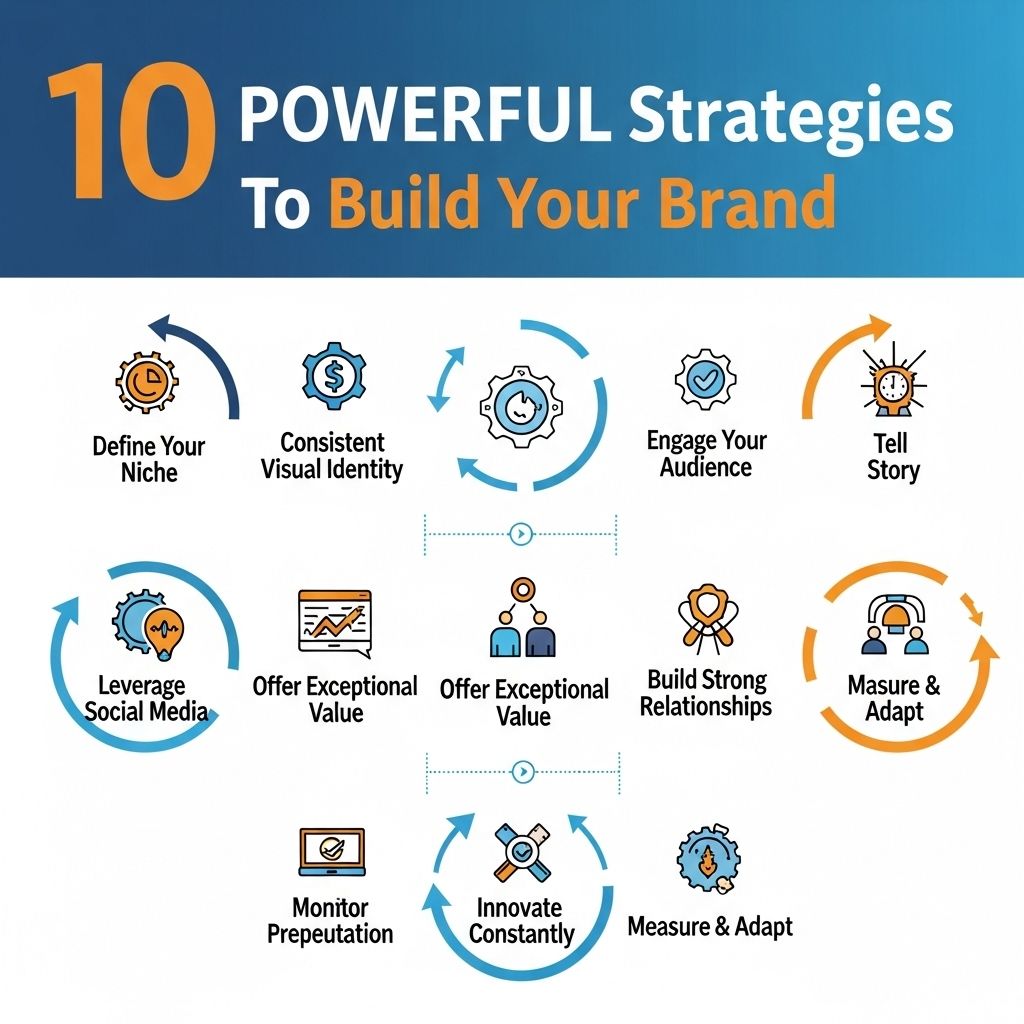In today’s competitive landscape, building a strong brand is more important than ever. A brand encompasses more than just a logo; it is the perception that consumers have about a company and its products or services. This article explores ten powerful strategies for building a brand that resonates with your target audience and establishes a lasting presence in your industry.
Understanding Your Brand Identity
Before diving into strategies, it is crucial to have a clear understanding of your brand identity. This includes your mission, values, and the unique selling propositions (USPs) that set you apart from the competition. A well-defined brand identity serves as the foundation for all branding efforts.
1. Define Your Brand Mission and Vision
Your brand mission outlines what your company does, while your vision describes what you aspire to be. These statements should reflect your core values and guide all business decisions. Consider the following:
- Mission Statement: Clearly articulate what your brand stands for and the value it delivers.
- Vision Statement: Describe the long-term impact you wish to make in your industry.
Creating a Unique Brand Voice
Your brand voice is the personality of your brand, communicated through your messaging, marketing materials, and customer interactions. A distinctive voice can create emotional connections with your audience.
2. Establish a Consistent Tone
Whether formal, casual, playful, or serious, your tone should remain consistent across all platforms. To determine your brand’s tone:
- Analyze your target audience’s preferences.
- Consider the nature of your products or services.
- Evaluate your competitors’ tones to identify gaps.
3. Craft a Compelling Brand Story
People connect with stories far more than facts. Your brand story should communicate your journey, values, and what makes you unique. Include:
- Your founding story and inspiration.
- Challenges you faced and how you overcame them.
- Your vision for the future.
Enhancing Brand Visibility
Once you’ve defined your brand identity and established your voice, it’s time to enhance visibility through strategic marketing efforts.
4. Leverage Social Media
Social media platforms allow for direct engagement with your audience. To maximize impact:
- Choose platforms where your target audience is most active.
- Develop a content calendar to maintain consistency.
- Engage with followers through comments, polls, and live sessions.
5. Utilize Influencer Marketing
Collaborating with influencers can help extend your reach and enhance credibility. Consider the following steps:
- Identify influencers who align with your brand values.
- Build genuine relationships with them.
- Create campaigns that allow them to showcase your products authentically.
Building Trust and Loyalty
Trust is the bedrock of any successful brand. Fostering loyalty among your customers can lead to repeat business and referrals.
6. Deliver Consistent Quality
Your products or services should meet or exceed expectations. To ensure quality:
- Implement quality control processes.
- Solicit customer feedback and make improvements.
- Ensure that all customer touchpoints reflect your brand standards.
7. Encourage Customer Engagement
Engaging with customers fosters a sense of community around your brand. Strategies include:
- Creating interactive content such as quizzes and contests.
- Encouraging user-generated content.
- Implementing loyalty programs.
Measuring Brand Success
To refine your branding efforts, it is essential to measure your success through various metrics.
8. Monitor Brand Awareness
Use tools like Google Analytics, social media insights, and surveys to gauge brand awareness and perception. Key metrics include:
| Metric | How to Measure |
|---|---|
| Website Traffic | Google Analytics |
| Social Media Engagement | Platform Analytics |
| Customer Retention Rate | CRM Tools |
9. Analyze Customer Feedback
Customer feedback provides invaluable insights into how your brand is perceived. To effectively analyze feedback:
- Use surveys and feedback forms post-purchase.
- Monitor online reviews and ratings.
- Engage with customers to understand their experiences.
Adapting and Evolving Your Brand
The business landscape is always changing, and your brand must adapt to remain relevant.
10. Stay Informed About Trends
Being aware of industry trends can provide opportunities for innovation. Stay informed by:
- Following industry leaders and publications.
- Participating in workshops and conferences.
- Continuously researching market shifts.
By implementing these ten strategies, you can build a powerful brand that resonates with your audience and stands the test of time. Remember, brand building is an ongoing process that requires dedication, consistency, and adaptability. Embrace your unique story and let it shine through in every aspect of your brand.
FAQ
What are effective strategies to build my brand?
Effective strategies include defining your brand identity, understanding your target audience, creating valuable content, leveraging social media, and building partnerships.
How important is consistency in branding?
Consistency is crucial in branding as it builds trust and recognition among your audience, helping to solidify your brand’s identity.
Can I use social media to enhance my brand’s visibility?
Yes, utilizing social media platforms allows you to engage with your audience, share your brand story, and increase your brand’s visibility.
What role does content marketing play in brand building?
Content marketing helps to establish authority in your industry, attract potential customers, and create a connection with your audience.
How can partnerships help in building my brand?
Strategic partnerships can enhance your brand’s credibility, expand your reach, and introduce your brand to new audiences.
What are the benefits of having a strong brand identity?
A strong brand identity differentiates you from competitors, fosters customer loyalty, and enhances your overall market presence.




